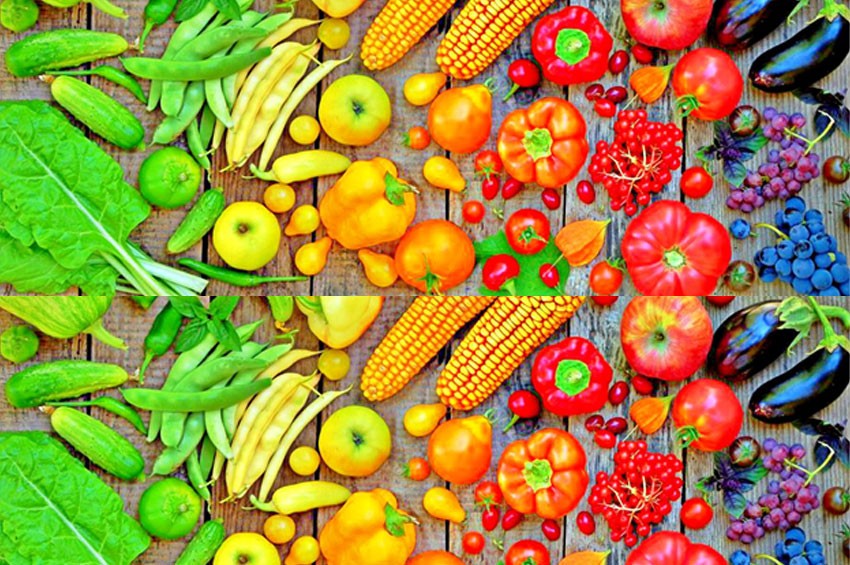The Benefits of Eating Fruits and Vegetables
The consumption of vegetables contributes to the organism certain nutritional properties that are indispensable in the daily diet.
Fruits and vegetables contain innumerable properties and health benefits and are postulated as powerful antioxidants. These in turn are determined by their chromatic composition.
The recommended consumption by the experts oscillates between three and five pieces combined throughout the day, which becomes a tedious and somewhat squared task in which many give up the first ones of change.
The lack of knowledge or directly the refusal to let the fruit and vegetables take a place in the shopping cart results in the nutritional vacuum left in the food routine of the people. The lack of education in food, especially during childhood and later in the adolescent stage, is perhaps one of the tricks on which the rejection of vegetables to the table is sustained. However, this type of food is essential for an optimal development of the organism in its growth phase.
Benefits of Vitamin C
Among the most important benefits of these foods we can mention that vegetables are a healthy source of vitamins, especially vitamin C. They also provide high mineral values through fiber, potassium – which helps to eliminate excess fluid – , or magnesium. For its part, its high content of antioxidants helps prevent some cardiovascular and neuro degenerative diseases, as well as many related to digestive disorders and certain cancer profiles. Other of its healthier qualities delve into the low caloric intake, as opposed to the high water content of its juices. Perhaps one of its peculiarities of use and consumption is that, given its wide variety, vegetables can be purchased during the twelve months of the year.
A practical and simple exercise to mark a food routine consisting of several servings of fruits and vegetables may be what many nutritionists recommend in their sessions. According to the classification of their color and tonality, these provide certain attributes and very beneficial properties. A game in which, however childish or even strict it may seem, everyone wins out in health, well-being and vitality.
Benefits of Vitamin A
The orange or yellowish vegetables have a positive impact on the protection and sustenance of the skin, combating the disturbances that may be caused by ultraviolet rays thanks to the antioxidant role that monopolizes vitamin A. Orange, peach, pumpkin or the carrots are some of the representatives of this first group of pigmentation.
On the other hand, the vegetable foods most associated with the white color are an excellent producer of white blood cells, which makes them an extraordinary antioxidant and a great ally when it comes to fighting with certain types of infections. The strengthening of the body’s defenses and the multiplication of protective enzymes that can help reduce blood pressure or cholesterol parameters, among others. Pears, apples, cauliflower, cucumber, onion or garlic are part of this group.
To finish drawing this scheme we focus on red and purple products, which focus on reducing cardiovascular problems and increasing blood circulation. They also have a favorable impact on the health of the memory, on the functioning of the urinary tract and an adequate maintenance of the immune system. Tomatoes, cherries, cranberries, grapefruit, pomegranate, beetroot or red cabbage should have a space in the fridge at home.







Leave A Comment